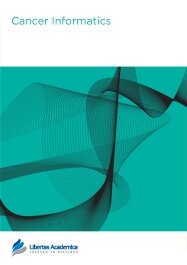


Department of Radiological Sciences, David Geffen School of Medicine at UCLA, Los Angeles, CA, U.S.A.
Abstract: Computer tomography (CT) imaging plays an important role in cancer detection and quantitative assessment in clinical trials. High-resolution imaging studies on large cohorts of patients generate vast data sets, which are infeasible to analyze through manual interpretation. In this article we describe a comprehensive architecture for computer-aided detection (CAD) and surveillance on lung nodules in CT images. Central to this architecture are the analytic components: an automated nodule detection system, nodule tracking capabilities and volume measurement, which are integrated within a data management system that includes mechanisms for receiving and archiving images, a database for storing quantitative nodule measurements and visualization, and reporting tools. We describe two studies to evaluate CAD technology within this architecture, and the potential application in large clinical trials. The fi rst study involves performance assessment of an automated nodule detection system and its ability to increase radiologist sensitivity when used to provide a second opinion. The second study investigates nodule volume measurements on CT made using a semi-automated technique and shows that volumetric analysis yields significantly different tumor response classifications than a 2D diameter approach. These studies demonstrate the potential of automated CAD tools to assist in quantitative image analysis for clinical trials.PDF (1.07 MB PDF FORMAT)
RIS citation (ENDNOTE, REFERENCE MANAGER, PROCITE, REFWORKS)
BibTex citation (BIBDESK, LATEX)
XML
PMC HTML

Cancer Informatics has become an increasingly important source for research in the methodology of cancer genomics and the novel use of informatics technology. I have been impressed by the journal's contents and have been very gratified by the number of accesses to my recent publication. Cancer Informatics has filled an important gap in cancer research journals.

All authors are surveyed after their articles are published. Authors are asked to rate their experience in a variety of areas, and their responses help us to monitor our performance. Presented here are their responses in some key areas. No 'poor' or 'very poor' responses were received; these are represented in the 'other' category.See Our Results
Copyright © 2013 Libertas Academica Ltd (except open access articles and accompanying metadata and supplementary files.)
Facebook Google+ Twitter
Pinterest Tumblr YouTube